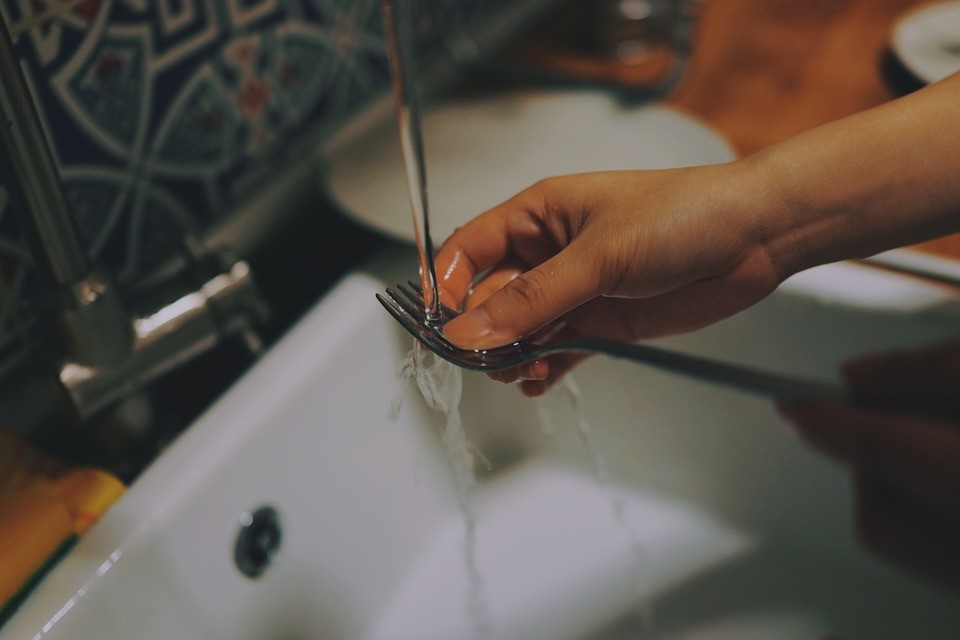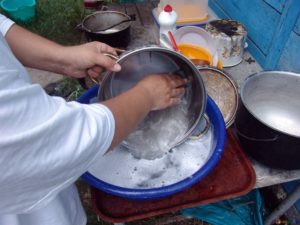When considering the room with the most bacteria in our homes, you would be forgiven for mistakenly thinking it was the bathroom.
However, microscopic germs and bacteria actually favour the kitchen and the spaces where you prepare and eat food. And at the centre of all this microbial activity is your kitchen sponge. If you wash your flatware, plates and cups by hand, your kitchen ware may not be as sparkling clean as you thought.
Here is our useful guide on the best way to hand-wash dishes.
Avoid Using a Sponge
In 2017, a study found that 362 different types of bacteria lived on the surfaces of kitchen sponges in ordinary homes.
This equated to around 45 billion bugs per square centimetre, and almost 5.5 trillion microscopic germs on each sponge used to clean dishes. Sponges are the perfect breeding ground for bugs and bacteria due to the quantity of food residue which sticks inside and on the porous surface. The moist nature of the sponge also attracts germs and creates the ideal environment.
Experts have explained that as the sponge never dries it becomes the perfect place for bacteria, and we can never completely remove food particles from the sponge.
The positive news is that the bacteria found in kitchen sponges is generally not the ones which make us sick, with campylobacter, E. coli and salmonella not found in the study. However, it could be that they were overwhelmed by the number of other bacteria.
If you do use sponges, it is important to replace them frequently, with a new one once a week.
A better option is to use a silicone or plastic brush, as these tend to be drier when not in use and do not contain as many crevices as sponges. These can also be stood up or stored in a container, which allows them to dry out efficiently.
The Best Method
The best way to sanitise cups and dishes is to use a dishwasher, with commercial dishwashers used in professional catering businesses. For example, see the commercial dishwashers available online at 247 commercial catering.
As a dishwasher uses both hot water and heat cycles, it is the most effective method of cleaning eating utensils. It is also best practice to use a full energy cycle, as low-energy cycles generate less heat, which affects sanitation.






